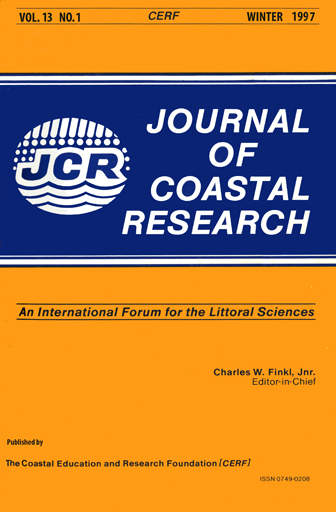Process-Response Analysis for the North Frisian Supratidal Sands (Germany)
Keywords:
Coastal sediments, morphodynamics, storms, Wadden SeaAbstract
The North Frisian supratidal sands are located at the seaward border of the German Wadden Sea. They occupy a total area of about 28 km2 and have neither dunes nor a vegetation cover. Previous investigations have documented that the sands have been migrating landward at least since 1947. These sands have great ecological as well as coastal defense significance and as a result, were subjected to a process-response analysis. From 1947 to 1991, the sands moved in an eastward direction over a distance ranging from 250 m in the south to 1,600 m in the north. It is suggested that this movement occurred in response to a 0.49 cm/yr rise of mean high water (MHW). Consequently, 36 to 42 million m3 of sediment was released from the upper beaches of the sands. During the same period, 32 million m3 of sediment was deposited at the surface and the spits of the sands. The increase in elevation was sufficient to balance the observed MHW-rise. Thus, most of the sediment eroded from the western side raised and lengthened the sands. The actual sediment redistribution (morphodynamics) is probably controlled by overwash and spit forming processes, operating within a framework of a rising sea level and increasing storminess.


